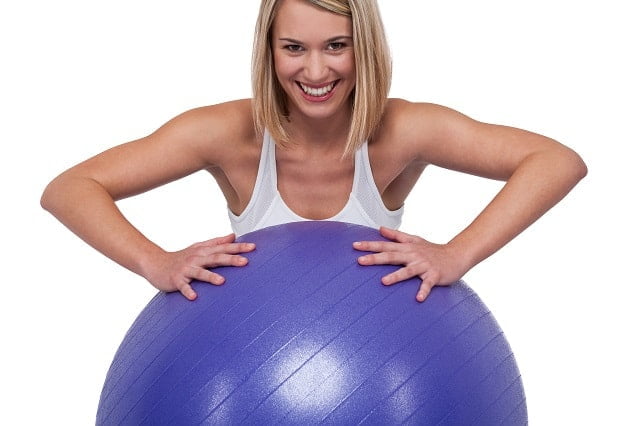Balance exercises are a crucial component of any fitness routine, helping to improve overall performance and enhance physical abilities. Whether you’re an athlete looking to maximize your athletic potential or simply someone aiming for better coordination and stability, incorporating balance exercises into your workouts can yield significant benefits.
By understanding the importance of balance in fitness and the ways in which balance exercises can contribute to your overall wellbeing, you can take a proactive approach towards achieving optimal fitness levels.
When it comes to fitness, balance is not just about staying upright on one leg. It plays a fundamental role in every movement we make, from walking and running to lifting weights or practicing yoga poses. It is the ability to maintain control over our body’s position in space and execute movements with precision and stability. By focusing on improving our balance through targeted exercises, we can enhance our coordination, increase joint stability, and develop a stronger core.
The benefits of incorporating balance exercises into your fitness routine extend beyond improved physical abilities. These exercises also help in injury prevention by strengthening the muscles that support joints and promoting proper alignment throughout various activities.
Additionally, balance training has been shown to stimulate cognitive function by challenging the brain’s ability to process sensory information and make quick adjustments. With these advantages in mind, let’s explore the science behind balance and delve into specific types of balance exercises that can be incorporated into your fitness routine.
The Science Behind Balance
Balance is a crucial aspect of our daily lives, and its importance in fitness routines should not be underestimated. From a physiological standpoint, balance refers to the ability to maintain the body’s center of gravity over a stable base of support. Our body’s balance system consists of the vestibular system, proprioception, and vision working together to help us stay upright and maintain posture.
The vestibular system, located within the inner ear, plays a significant role in balance by providing information about head position and movement to the brain. Proprioception, on the other hand, involves receptors in our muscles and joints that provide feedback on body position and movement. Lastly, vision provides additional information to help us perceive our surroundings.
Incorporating balance exercises into your fitness routine can have numerous benefits. Firstly, these exercises help improve proprioception by training the body to become more aware of its position in different movements. This increased awareness can greatly enhance overall coordination and stability.
Secondly, balance exercises engage core muscles as they work to stabilize the body during various movements. Strong core muscles contribute to better posture and reduce the risk of back pain or injuries.
Finally, incorporating balance exercises into your fitness routine can help prevent injuries during other activities. By improving stability and coordination through these exercises, you are better equipped to handle sudden shifts in weight distribution or unexpected movements.
To summarize, understanding the science behind balance is key to recognizing its importance in fitness routines. By incorporating balance exercises into your workouts regularly, you can improve coordination, stability, core strength while reducing the risk of injuries.
Types of Balance Exercises
When it comes to incorporating balance exercises into your fitness routine, there are various types to choose from. These exercises can help improve stability, coordination, and core strength. Whether you prefer static exercises that focus on holding a position or dynamic exercises that involve movement, there is something for everyone. Here are some examples of different types of balance exercises:
- Static Balance Exercises: These exercises require you to hold a position without moving. One simple exercise is the single-leg stand, where you stand on one leg for a certain amount of time before switching to the other leg. Another option is the tree pose in yoga, where you stand on one leg with the sole of your other foot resting against your inner thigh.
- Dynamic Balance Exercises: These exercises involve movement while maintaining your balance. One example is walking on a balance beam or narrow surface, which challenges your stability as you move forward. Another dynamic exercise is the heel-to-toe walk, where you place the heel of one foot directly in front of the toes of the opposite foot with each step.
- Proprioceptive Exercises: Proprioception refers to our body’s ability to sense its position and movements in space. Proprioceptive balance exercises focus on enhancing this sense by introducing external factors that challenge our balance even further. This can be done by using tools like wobble boards or foam pads that create an unstable surface while performing basic movements like squats or lunges.
Incorporating a variety of these balance exercises into your fitness routine can provide numerous benefits. These include improved coordination, enhanced stability, and increased core strength. By challenging yourself through different types of balance exercises, you can see improvements not only in your overall fitness but also in other activities and sports that require good balance.
Remember to start with beginner-friendly variations and gradually progress to more advanced versions as your balance improves. Additionally, always ensure proper form and consult with a fitness professional if you have any concerns or existing injuries. Including a mix of static, dynamic, and proprioceptive balance exercises in your routine can help keep your workouts fun, engaging, and beneficial for your overall fitness journey.
Equipment for Balance Exercises
When it comes to incorporating balance exercises into your fitness routine, having the right equipment can enhance your workouts and help you achieve better results. There are several types of equipment available that can be used to add an element of challenge and variety to your balance exercises. In this section, we will explore different equipment options and discuss the pros and cons of each.
One popular piece of equipment for balance exercises is a balance board. A balance board is a platform that has a rounded or unstable base, which requires you to engage more muscles in order to maintain stability. The advantage of using a balance board is that it can target multiple muscle groups at once, including your core, legs, and ankles. It also helps improve proprioception, which is your body’s awareness of its position in space.
Another option is a stability ball, also known as an exercise ball or Swiss ball. Using a stability ball for balance exercises adds an extra challenge because the ball is inherently unstable. When performing exercises such as squats or lunges on a stability ball, you must engage more muscles to keep yourself balanced. Additionally, the soft surface of the stability ball provides an added element of instability compared to solid ground, which further enhances the benefits of these exercises.
In addition to these two popular options, there are other equipment choices available for balance exercises such as wobble boards, foam pads, and Bosu balls. Each piece of equipment offers unique benefits and challenges for improving your balance and overall fitness. It is important to note that while using equipment can provide additional support or resistance during balance exercises, many exercises can still be performed without any equipment by utilizing just your body weight.
| Equipment | Pros | Cons |
|---|---|---|
| Balance Board | – Targets multiple muscle groups – Improves proprioception | – May require some initial balance and coordination skills – Can be challenging for beginners |
| Stability Ball | – Enhances stability and core strength – Increases muscle engagement | – Requires proper form and technique to avoid injury – May require extra space for exercises |
| Wobble Boards, Foam Pads, Bosu Balls, etc. | – Provides variety in exercises – Increases difficulty and challenge | – Requires additional balance and coordination – Some equipment may have a higher risk of injury if not used properly |
Before incorporating any equipment into your balance exercise routine, it is important to consider your current fitness level and any existing injuries or limitations. It is also recommended to consult with a fitness professional who can provide guidance on the appropriate equipment choices based on your individual needs.
Beginner Balance Exercises
Introduction to Beginner Balance Exercises
Incorporating balance exercises into your fitness routine is a great way to improve overall strength, stability, and coordination. Whether you are just starting your fitness journey or looking to add variety to your existing workouts, beginner balance exercises can help you build a solid foundation for better balance. These exercises are designed to be accessible for individuals of all fitness levels and can be done at home or in a gym setting.
Static Balance Exercises
Static balance exercises are a fundamental component of any beginner’s balance training. They involve maintaining a stable position without any movement. One simple yet effective exercise is the single-leg stand.
To perform this exercise, stand tall with your feet hip-width apart, then lift one foot off the ground and hold for 30 seconds. Repeat on the other side. This exercise challenges your leg muscles and improves proprioception, which is your body’s awareness of where it is in space.
Another static balance exercise that targets core stability is the plank stance. Begin by getting into a traditional plank position with your forearms on the ground and toes on the floor. Once you’re in position, lift one leg off the floor while maintaining your alignment. Hold for 20 seconds and then switch legs. This exercise strengthens your core muscles while also improving balance.
Dynamic Balance Exercises
Dynamic balance exercises involve movement while maintaining control and stability. They challenge multiple muscle groups simultaneously, helping to enhance coordination and functional fitness. One example of a dynamic balance exercise suitable for beginners is walking heel-to-toe. Begin by standing upright with one foot in front of the other so that they touch heel-to-toe. Take slow, deliberate steps forward while maintaining this alignment pattern.
For an added challenge, try incorporating arm movements into your dynamic balance exercises. For instance, perform alternating toe touches where you stand with feet together and raise one leg straight out in front of you while simultaneously reaching the opposite arm to touch the toe. Switch sides and repeat this exercise to improve coordination and balance.
By starting with these beginner-friendly balance exercises, you can build a strong foundation for improved balance and overall fitness. It is essential to listen to your body and progress at a pace that feels comfortable for you. Remember to always consult with a fitness professional before starting any new exercise routine, especially if you have any pre-existing conditions or injuries.
Advanced Balance Exercises
Once you have mastered the beginner balance exercises, you may be ready to challenge yourself with more advanced balance exercises that target specific muscle groups and enhance stability even further. These exercises require a higher level of strength, coordination, and control. It is important to always maintain proper form and progression as you move on to more advanced levels.
- Single-Leg Deadlift: Stand on one leg while holding a dumbbell or kettlebell in the opposite hand. Keeping your back straight, hinge at the hips and lower the weight towards the floor while raising your non-standing leg behind you. Return to the starting position and repeat for a set number of repetitions before switching legs.
- Bosu Ball Push-Ups: Place a Bosu ball on the ground with the dome side up. Get into a push-up position with your hands on the sides of the Bosu ball. Perform push-ups while maintaining your balance on the unstable surface of the Bosu ball. This exercise will challenge your core stability and upper body strength.
- Stability Ball Pike: Start in a plank position with your feet resting on top of a stability ball and hands shoulder-width apart on the ground. Engaging your core, lift your hips towards the ceiling by rolling the stability ball towards your chest using your feet. Hold for a moment before returning to the starting position.
When performing these advanced balance exercises, it’s important to keep safety in mind:
– Always warm up properly before attempting any advanced exercises.
– Maintain proper form throughout each exercise to avoid injury.
– Progress gradually by increasing intensity or adding modifications as you become stronger and more stable.
– Consult with a fitness professional if you are unsure about performing an exercise correctly or if you have any concerns about your ability level.
By incorporating advanced balance exercises into your fitness routine, not only will you continue to improve coordination, stability, and core strength, but you will also take your fitness level to new heights. Remember to challenge yourself, but also listen to your body and progress at a pace that is appropriate for you. With persistence and practice, you will reap the full benefits of advanced balance exercises in no time.
Benefits of Balance Exercises for Fitness
Regular exercise is an essential part of maintaining a healthy lifestyle, but it’s equally important to ensure that our fitness routines include balance exercises. Incorporating balance exercises into your fitness routine can have numerous benefits for overall health and performance. By improving coordination, stability, and core strength, balance exercises can enhance your overall fitness level and reduce the risk of injuries in other activities.
Improved Coordination
Balance exercises require proprioception, which is your body’s ability to sense its position in space. When you perform balance exercises, your brain receives signals from different parts of your body about their positioning and adjusts accordingly. This constant feedback loop improves coordination as the brain learns to communicate more effectively with various muscle groups to maintain balance.
Enhanced Stability
A strong sense of stability is crucial for performing everyday activities like walking or lifting objects without falling or experiencing loss of control. Balance exercises challenge the body’s stabilizer muscles, which are responsible for keeping you steady in various positions and movements. By consistently engaging these muscles through balance exercises, you can improve your stability both on and off the exercise mat.
Stronger Core
Your core muscles play a vital role in maintaining good posture and stability. Balance exercises require engagement of the deep abdominal muscles, lower back muscles, and glutes to keep you upright. As you perform these exercises, you will notice an improvement in core strength over time. A stronger core not only helps with balance but also helps prevent back pain and improves overall athletic performance.
In addition to these benefits, incorporating balance exercises into your fitness routine can reduce the risk of injuries during other physical activities such as running or playing sports. Stronger stabilizer muscles help absorb impact forces and provide better joint stability, reducing the likelihood of sprains or strains. So whether you’re an athlete looking to improve performance or simply want to enhance your overall fitness level, don’t forget to include balance exercises in your workout routine.
Tips for Incorporating Balance Exercises into a Fitness Routine
Incorporating balance exercises into your fitness routine can significantly enhance your overall physical performance and help prevent injuries. Whether you are a beginner or an advanced fitness enthusiast, there are practical ways to integrate balance exercises into your existing workout plan. Here are some tips to help you get started.
Firstly, consider adding balance exercises to either your warm-up or cool-down routine. By incorporating balance exercises at the beginning of your workout, you can activate the muscles necessary for maintaining stability and improve your focus before moving onto more intense exercises. Alternatively, including balance exercises in your cool-down routine can help re-establish stability after an intense workout session.
To make the most of your balance exercise incorporation, choose exercises that align with your specific fitness goals. For example, if you are aiming to improve core strength, exercises such as planks or standing on a wobble board can be effective. On the other hand, if you want to target specific muscle groups while improving stability, incorporating single-leg squats or toe taps on a Bosu ball might be more suitable.
Furthermore, it is crucial to gradually progress your balance exercises over time. Start with beginner-friendly exercises and gradually increase the difficulty level as you become more comfortable and confident in maintaining stability. This progression helps challenge different muscle groups and continually improve proprioception skills.
Lastly, consider seeking guidance from a fitness professional when integrating balance exercises into your routine. They can provide personalized advice based on your individual needs and goals to ensure that you perform the exercises correctly and safely.
By following these tips and incorporating balance exercises into your fitness routine, you can unlock new levels of performance while reducing the risk of injuries. Remember that consistency is key when it comes to seeing results, so aim for regular practice of these exercises along with proper technique and form. Start today and enjoy the benefits that improved balance can bring to your overall fitness journey.
Conclusion
In conclusion, balance exercises are a crucial component of any fitness routine. By incorporating these exercises into your workouts, you can improve your overall performance and enhance your physical abilities. The science behind balance demonstrates its importance in maintaining stability and coordination, which are essential for various physical activities.
There are different types of balance exercises that you can choose from depending on your preference and fitness level. From static exercises like standing on one foot to dynamic exercises like walking on a balance beam, there are options for everyone. Additionally, there is a range of equipment available, such as balance boards and stability balls, that can further challenge your balance and stability.
The benefits of incorporating balance exercises into your fitness routine cannot be overstated. Improved coordination, stability, and core strength are just a few of the advantages you can expect to experience. Moreover, these exercises can also help reduce the risk of injuries in other physical activities by enhancing proprioception and body awareness.
If you’re looking to incorporate balance exercises into your fitness routine, it’s important to start with beginner-friendly exercises and progress at your own pace. Consulting with a fitness professional can also provide guidance and ensure that you’re performing the exercises correctly. Remember to listen to your body and make adjustments as needed.
In conclusion, achieving fitness through balance exercises is attainable for anyone willing to put in the time and effort. So why not give it a try? Start integrating some balance exercises into your routine today and enjoy the numerous benefits they have to offer.

Passionate about providing useful information to anyone with an interest in the field of Personal Training, I strive to pass on to our readers quality information and to answer any questions about Personal Trainers, the work they do and how to become one.





